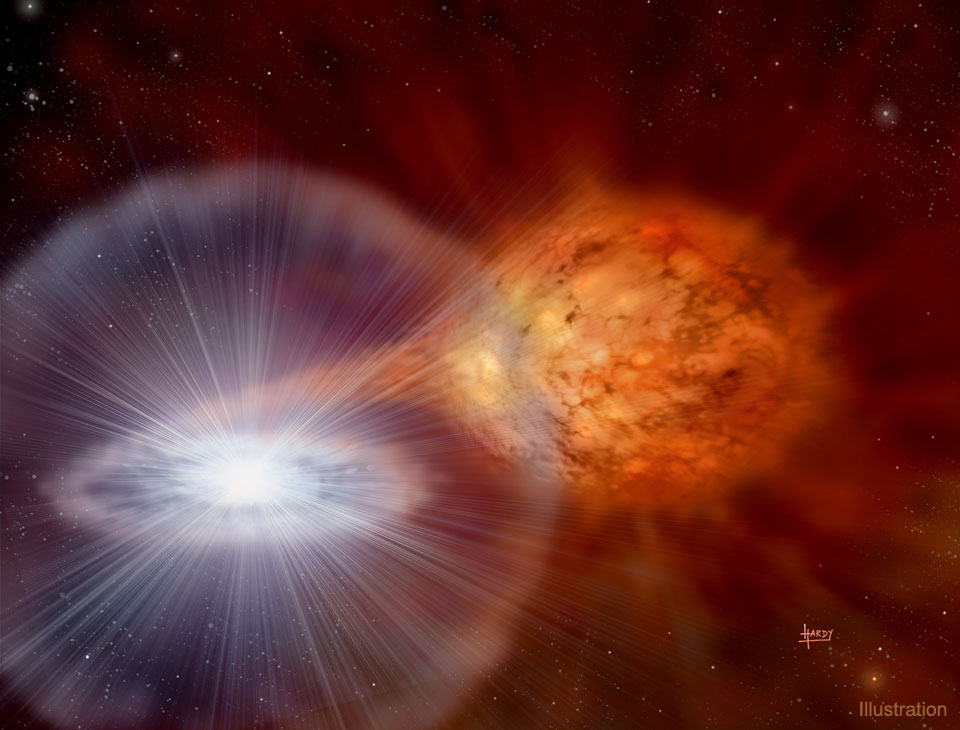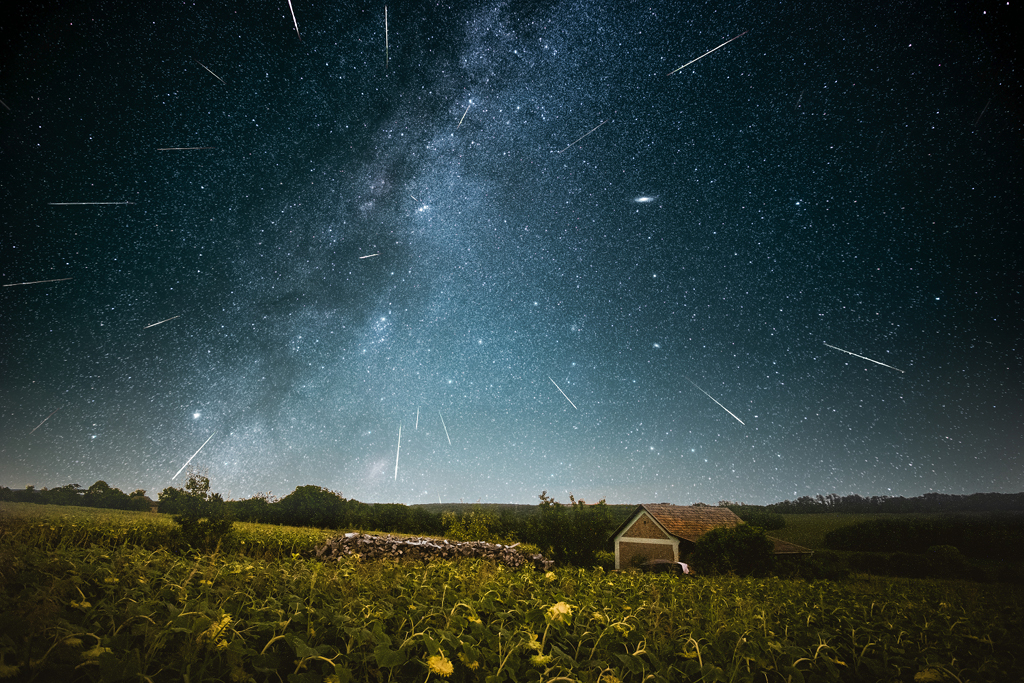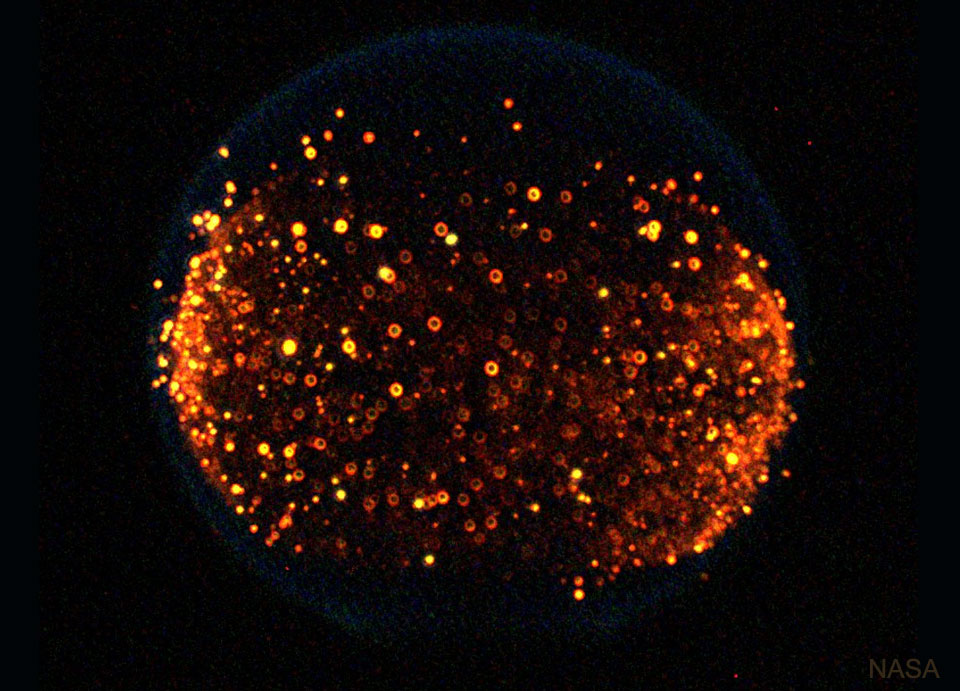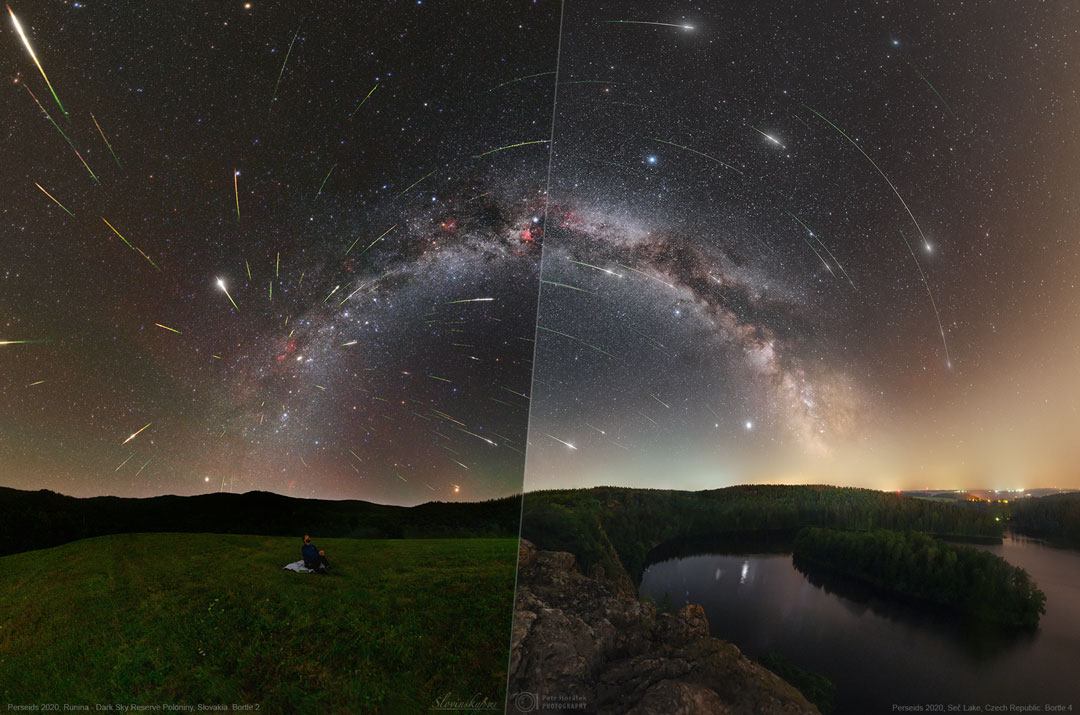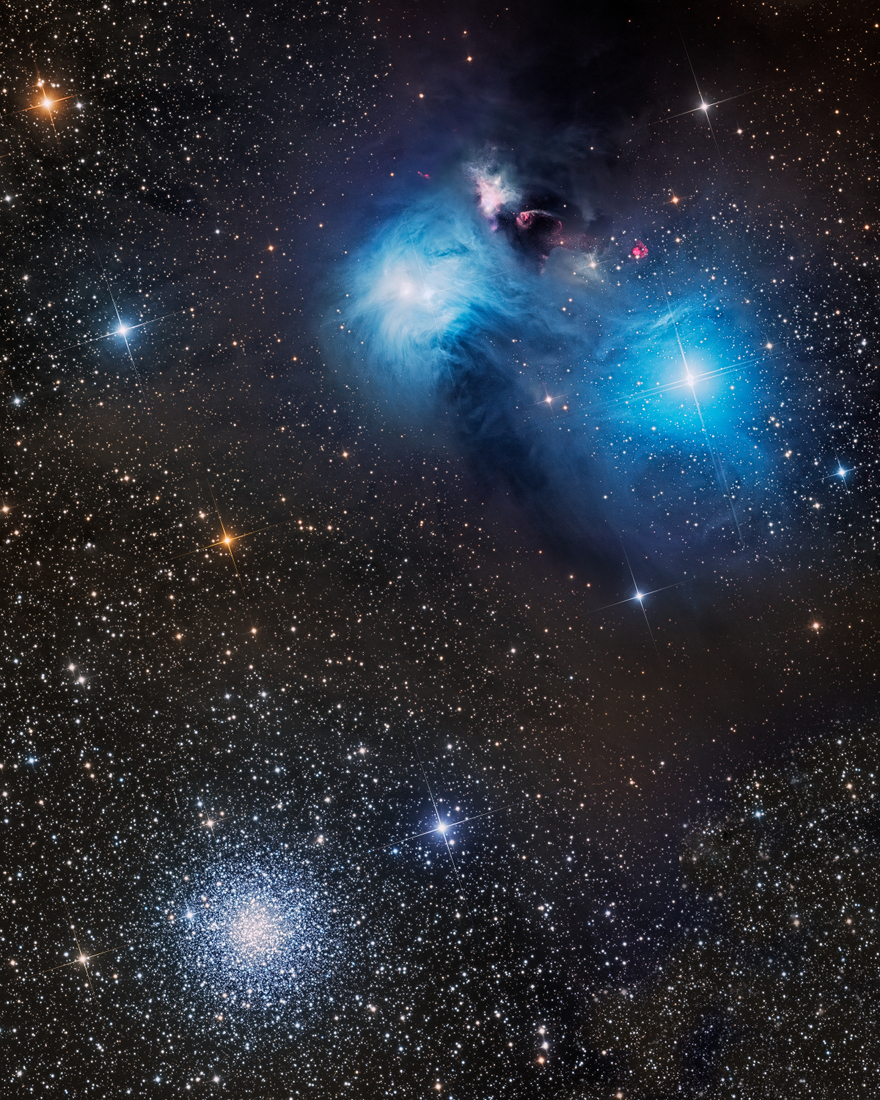
Nombre total de pages vues
23/08/2021
PRATIQUE/POURQUOI - Pourquoi a-t-on une meilleure réception lorsqu'on touche l'antenne d'une radio ?

ASTRONOMY - Island Universe, Cosmic Sand
2021 August 14
Image Credit & Copyright: Marzena Rogozinska
Explanation: Stars in our own Milky Way Galaxy are scattered through this eye-catching field of view. From the early hours after midnight on August 13, the 30 second exposure of the night sky over Busko-Zdroj, Poland records the colorful and bright trail of a Perseid meteor. Seen near the peak of the annual Perseid meteor shower it flashes from lower left to upper right. The hurtling grain of cosmic sand, a piece of dust from periodic comet Swift-Tuttle, vaporized as it passed through planet Earth's atmosphere at almost 60 kilometers per second. Just above and right of center, well beyond the stars of the Milky Way, lies the island universe known as M31 or the Andromeda Galaxy. The Andromeda Galaxy is the most distant object easily visible to the naked-eye, about 2.5 million light-years away. The visible meteor trail begins only about 100 kilometers above Earth's surface, though. It points back to the meteor shower radiant in the constellation Perseus off the lower left edge of the frame. Follow this bright perseid meteor trail below and left to the stars of NGC 869and NGC 884, the double star cluster in Perseus.
22/08/2021
ASTRONOMY - Explosions from White Dwarf Star RS Oph
2021 August 22
Illustration Credit & Copyright: David A. Hardy & PPARC
Explanation: Spectacular explosions keep occurring in the binary star system named RS Ophiuchi. Every 20 years or so, the red giant star dumps enough hydrogen gas onto its companion white dwarf star to set off a brilliant thermonuclear explosion on the white dwarf's surface. At about 5,000 light years distant, the resulting nova explosions cause the RS Oph system to brighten up by a huge factor and become visible to the unaided eye. The red giant star is depicted on the right of the above drawing, while the white dwarf is at the center of the bright accretion disk on the left. As the stars orbit each other, a stream of gas moves from the giant star to the white dwarf. Astronomers speculate that at some time in the next 100,000 years, enough matter will have accumulated on the white dwarf to push it over the Chandrasekhar Limit, causing a much more powerful and final explosion known as a supernova. Starting early this month, RS Oph was again seen exploding in a bright nova.
20/08/2021
021 August 20
Image Credit & Copyright: Balint Lengyel
Explanation: Frames from a camera that spent three moonless nights under the stars create this composite night skyscape. They were recorded during August 11-13 while planet Earth was sweeping through the dusty trail of comet Swift-Tuttle. One long exposure, untracked for the foreground, and the many star tracking captures of Perseid shower meteors were taken from the village of Magyaregres, Hungary. Each aligned against the background stars, the meteor trails all point back to the annual shower's radiant in the constellation Perseus heroically standing above this rural horizon. Of course the comet dust particles are traveling along trajectories parallel to each other. The radiant effect is due only to perspective, as the parallel tracks appear to converge in the distance against the starry sky.
11/08/2021
ASTRONOMY - Mammatus Clouds over Saskatchewan
2021 August 11
Image Credit & Copyright: Michael F Johnston
Explanation: When do cloud bottoms appear like bubbles? Normally, cloud bottoms are flat. This is because moist warm air that rises and cools will condense into water droplets at a specific temperature, which usually corresponds to a very specific height. As water droplets grow, an opaque cloud forms. Under some conditions, however, cloud pockets can develop that contain large droplets of water or ice that fall into clear air as they evaporate. Such pockets may occur in turbulent air near a thunderstorm. Resulting mammatus clouds can appear especially dramatic if sunlit from the side. The mammatus clouds pictured here, lasting only a few minutes, were photographed over Regina, Saskatchewan, Canada, just after a storm in 2012.
10/08/2021
ASTRONOMY - Fire in Space
2021 August 10
Image Credit: NASA
Explanation: What does fire look like in space? In the gravity on Earth, heated air rises and expands, causing flames to be teardrop shaped. In the microgravity of the air-filled International Space Station (ISS), however, flames are spheres. Fire is the rapid acquisition of oxygen, and space flames meet new oxygen molecules when they float by randomly from all directions -- creating the enveloping sphere. In the featured image taken in the ISS's Combustion Integration Rack, a spherical flame envelopes clusters of hot glowing soot. Without oxygen, say in the vacuum of empty space, a fire would go out immediately. The many chemical reactions involved with fire are complex, and testing them in microgravity is helping humanity not only to better understand fire -- but how to put out fire, too.
09/08/2021
ASTRONOMY - Perseus and the Lost Meteors
2021 August 9
Image Credit & Copyright: Tomas Slovinsky (Slovakia) & Petr Horalek (Czech Republic; Institute of Physics in Opava)
Explanation: What's the best way to watch a meteor shower? This question might come up later this week when the annual Perseid Meteor Shower peaks. One thing that is helpful is a dark sky, as demonstrated in the featured composite image of last year's Perseids. Many more faint meteors are visible on the left image, taken through a very dark sky in Slovakia, than on the right image, taken through a moderately dark sky in the Czech Republic. The band of the Milky Way Galaxy bridges the two coordinated images, while the meteor shower radiant in the constellation of Perseus is clearly visible on the left. In sum, many faint meteors are lost through a bright sky. Light pollution is shrinking areas across our Earth with dark skies, although inexpensive ways to combat this might be implemented.
08/08/2021
ASTRONOMY - A Perseid Below
2021 August 8
Image Credit: NASA ISS Expedition 28 Crew, Ron Garan
Explanation: Earthlings typically watch meteor showers by looking up. But this remarkable view, captured on August 13, 2011 by astronaut Ron Garan, caught a Perseid meteor by looking down. From Garan's perspective onboard the International Space Station orbiting at an altitude of about 380 kilometers, the Perseid meteors streak below, swept up dust left from comet Swift-Tuttle heated to incandescence. The glowing comet dust grains are traveling at about 60 kilometers per second through the denser atmosphere around 100 kilometers above Earth's surface. In this case, the foreshortened meteor flash is right of frame center, below the curving limb of the Earth and a layer of greenish airglow, just below bright star Arcturus. Want to look up at a meteor shower? You're in luck, as the 2021 Perseids meteor shower peaks this week. This year, even relatively faint meteors should be visible through clear skies from a dark location as the bright Moon will mostly absent.
07/08/2021
PRATIQUE - Voici l'astuce pour nettoyer vos ongles facilement.
ASTRONOMY - Stars and Dust Across Corona Australis
2021 August 6
Image Credit & Copyright: Vikas Chander
Explanation: Cosmic dust clouds cross a rich field of stars in this telescopic vista near the northern boundary of Corona Australis, the Southern Crown. Less than 500 light-years away the dust clouds effectively block light from more distant background stars in the Milky Way. Top to bottom the frame spans about 2 degrees or over 15 light-years at the clouds' estimated distance. At top right is a group of lovely reflection nebulae cataloged as NGC 6726, 6727, 6729, and IC 4812. A characteristic blue color is produced as light from hot stars is reflected by the cosmic dust. The dust also obscures from view stars in the region still in the process of formation. Just above the bluish reflection nebulae a smaller NGC 6729 surrounds young variable star R Coronae Australis. To its right are telltale reddish arcs and loops identified as Herbig Haro objects associated with energetic newborn stars. Magnificent globular star cluster NGC 6723 is at bottom left in the frame. Though NGC 6723 appears to be part of the group, its ancient stars actually lie nearly 30,000 light-years away, far beyond the young stars of the Corona Australis dust clouds.
ASTRONOMY - Fox Fur, Cone, and Christmas Tree
2024 December 24 Fox Fur, Cone, and Christmas Tree Image Credit & Copyright: Tim White Explanation: What do the following things have...
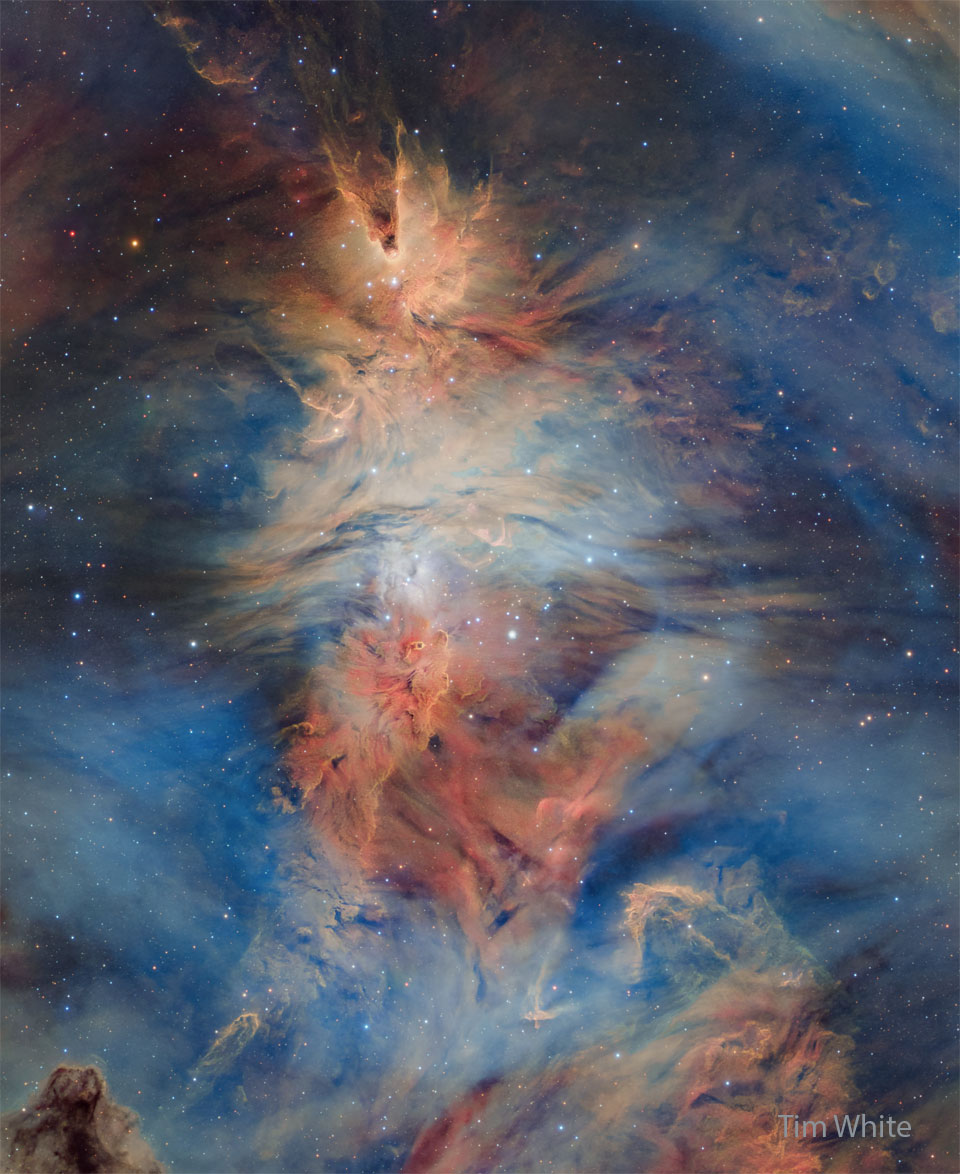
-
2021 May 11 Lightning and Orion Beyond Uluru Image Credit & Copyright: Park Liu Explanation: What's happening behind Uluru? A Un...
-
Extraordinary Solar Halos Image Credit & Copyright : Magnus Edback Explanation: Welcome to the December Solstice, the first...

